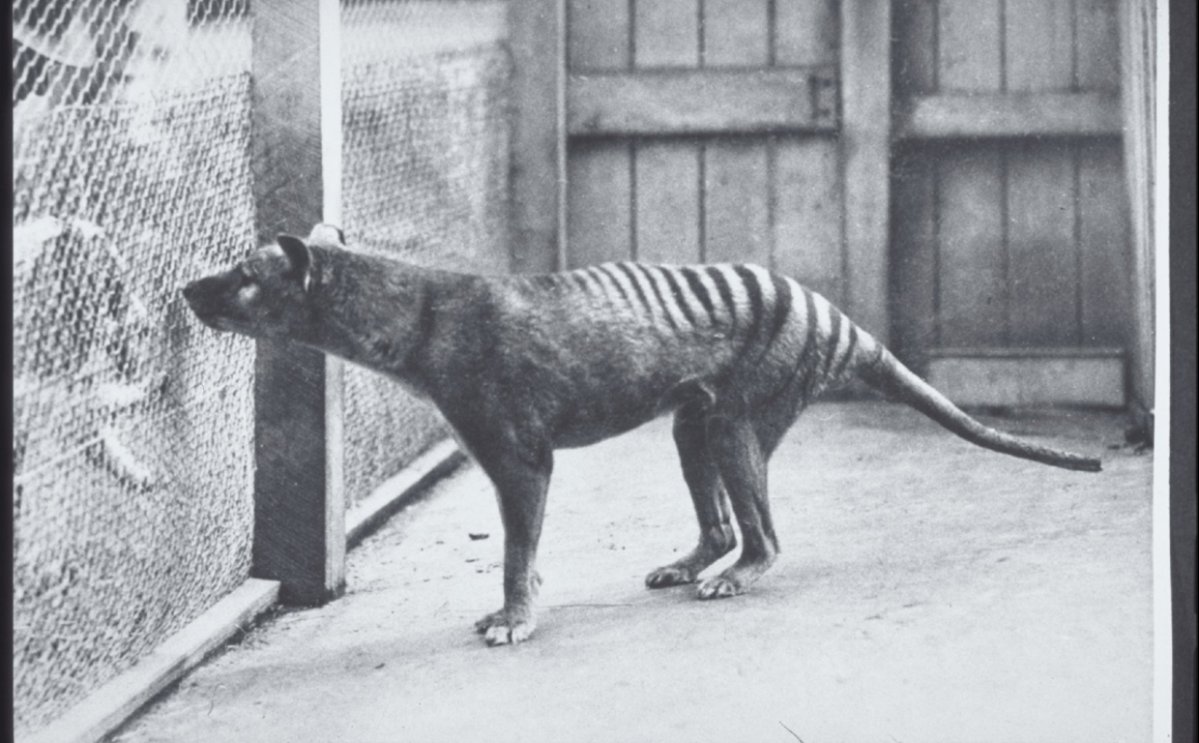An animal believed to have gone extinct more than 80 years ago may be making a comeback.

The large striped carnivore known as the Tasmanian tiger was declared extinct back in 1936, but the Australian government has received reports of multiple sightings, some as recently as two months ago.
In fact, there have been a total of eight sightings in the past three years, according to a document released by Tasmania’s Department of Primary Industries, Parks, Water and Environment.
READ MORE: 1 million species face extinction as humans plunder nature at ‘unprecedented’ rate
The Tasmanian tiger, or thylacine, was a marsupial — an animal that keeps its young in a pouch, like a kangaroo. It had a long, cat-like tail and features reminiscent of a fox or wolf.
The Australian Museum says it had yellowish-brown fur, powerful jaws and a pouch for its young. According to the museum’s imagery of the animal, it had stripes along its back, sharp canine teeth and pointy ears.
The last one of its kind reportedly died in captivity more than 80 years ago.
The Tasmanian tiger moved at a slow pace and, like cats, hunted at night. It used to live across Australia, New Guinea and Tasmania but ended up confined to Tasmania until it was declared extinct, the museum says.
A sighting report from February states the witnesses are “100 per cent certain that the animal they saw was a thylacine.”
The group was reportedly visiting Tasmania from Western Australia when they saw an animal with a “stiff and firm tail” walk out onto the road in front of them.
A sighting report from one year prior states witnesses saw a “large, cat-like creature” crossing the road, with one witness saying they had “never come across an animal anything close to what I saw in Tasmania that day.”
READ MORE: Climate change activists block bridges, cause traffic chaos across Canada
While it’s unknown exactly what drove the Tasmanian tiger into extinction, the museum says it was likely a result of competition with the dingo and hunting pressure from humans.
In 2002, CNN reported that scientists at the museum had replicated the DNA of a Tasmanian tiger, hoping to bring the species back.
—





Comments